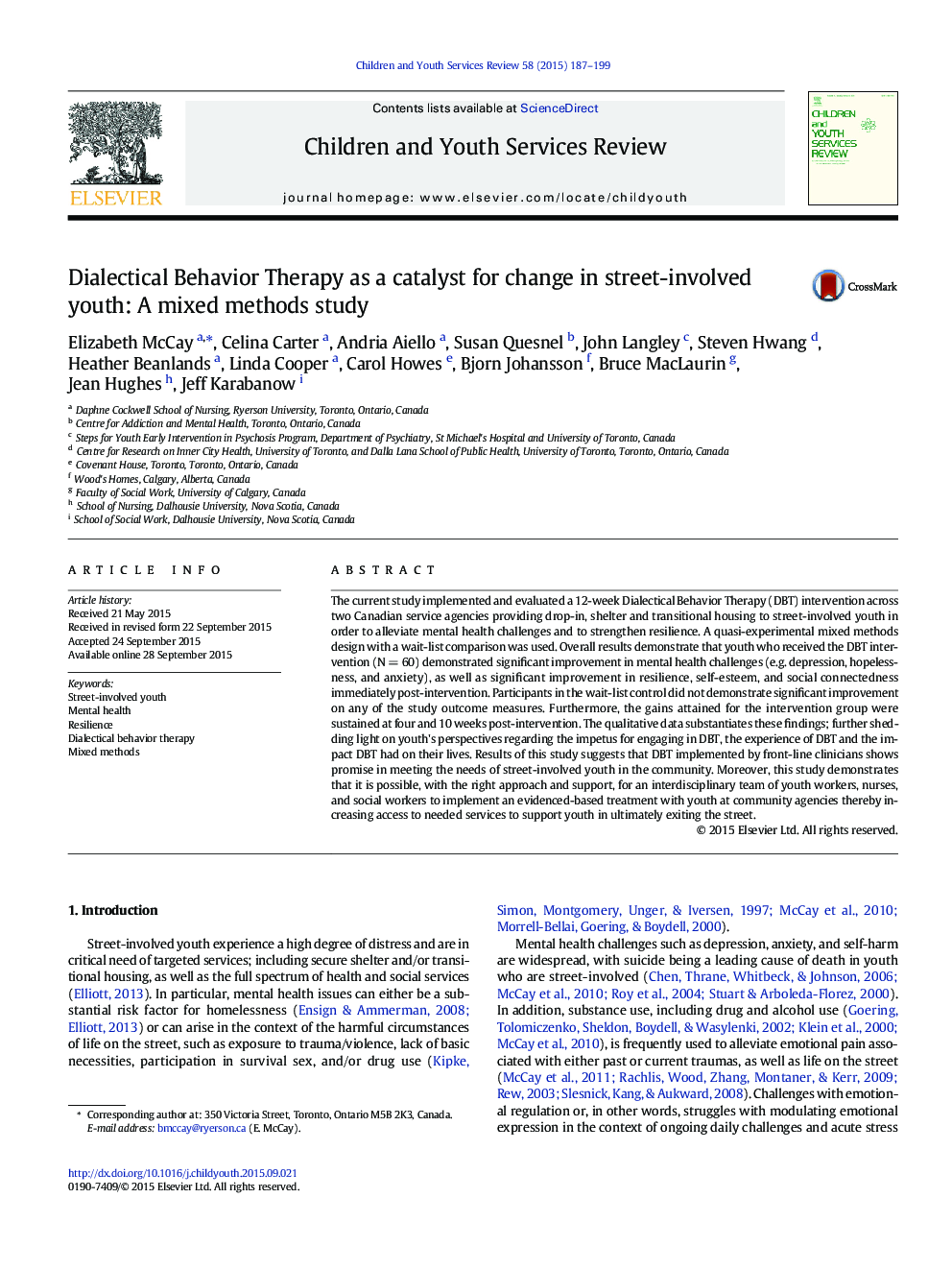| Article ID | Journal | Published Year | Pages | File Type |
|---|---|---|---|---|
| 345934 | Children and Youth Services Review | 2015 | 13 Pages |
•Youth who received DBT showed significant improvement in mental health outcomes.•Youth in the wait-list control group showed no significant improvement in outcomes.•For the intervention group, gains were sustained at 4 & 10 weeks post-intervention.•Qualitative data explicated an enhanced understanding of the quantitative findings.•DBT delivered by front-line staff in the community shows promise for street youth.
The current study implemented and evaluated a 12-week Dialectical Behavior Therapy (DBT) intervention across two Canadian service agencies providing drop-in, shelter and transitional housing to street-involved youth in order to alleviate mental health challenges and to strengthen resilience. A quasi-experimental mixed methods design with a wait-list comparison was used. Overall results demonstrate that youth who received the DBT intervention (N = 60) demonstrated significant improvement in mental health challenges (e.g. depression, hopelessness, and anxiety), as well as significant improvement in resilience, self-esteem, and social connectedness immediately post-intervention. Participants in the wait-list control did not demonstrate significant improvement on any of the study outcome measures. Furthermore, the gains attained for the intervention group were sustained at four and 10 weeks post-intervention. The qualitative data substantiates these findings; further shedding light on youth's perspectives regarding the impetus for engaging in DBT, the experience of DBT and the impact DBT had on their lives. Results of this study suggests that DBT implemented by front-line clinicians shows promise in meeting the needs of street-involved youth in the community. Moreover, this study demonstrates that it is possible, with the right approach and support, for an interdisciplinary team of youth workers, nurses, and social workers to implement an evidenced-based treatment with youth at community agencies thereby increasing access to needed services to support youth in ultimately exiting the street.
